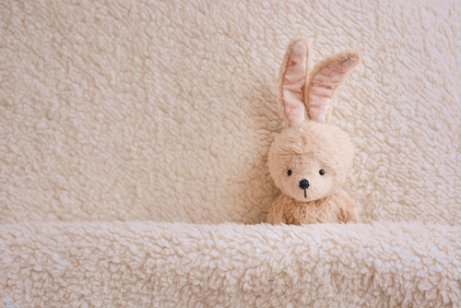The Rabbit Who Wants to Fall Asleep

For many families, bedtime can be quite a battle. Parents often feel overwhelmed because of how long it takes for their children to finally give in to their tiredness.
Getting kids to fall asleep early is no small task. It’s important to find effective methods so your little ones get the rest they need .
Of course, there’s no one-size-fits-all solution to make your kids sleepy because every child is unique. However, there are many different tricks you can try, depending on each case.
Reading is a common recommendation. That’s why we want to invite you today to discover the benefits behind The Rabbit Who Wants to Fall Asleep .
Swedish psychologist Carl-Johan Forssén Ehrlin wrote the book with a specific intention. He wanted to provide a simple method for helping children fall asleep.
The Rabbit Who Wants to Fall Asleep teaches children values and helps them learn to overcome obstacles.

Characteristics of The Rabbit Who Wants to Fall Asleep
Since this title came out on the market, it has become a top selling children’s story.
The book is sought after online, in stores and in libraries, and is available in 7 different languages to date.
Below are some of the book’s main characteristics:
- The words that appear most frequently in the book are: Sleep, tired, asleep and dream.
- There are 26 pages in the book, full of colorful illustrations. A rabbit, a sleepy snail and Uncle Yawn are the story’s main characters.
- The author uses techniques of suggestion and relaxation to help little ones fall asleep.
- A user’s manual comes along with the book. It tells the reader when to make emphasis, when to speak in a lower voice, or when to use effects, such as yawning.
- Some instructions are marked in bold.
- The author uses simple language throughout the book.
Reading techniques for The Rabbit Who Wants to Fall Asleep
In The Rabbit Who Wants to Fall Asleep, the writer defines different linguistic and psychological techniques to reach his objective.
Therefore, in order to obtain optimal results, the reader should apply these same techniques.
For example, the reader should yawn during certain phrases, giving a sense of realism to the story. With other phrases, the reader must soften his or her tone of voice to make the child feel sleepier.
Good results don’t depend on the story itself. To help little ones fall asleep, it’s important to read The Rabbit Who Wants to Fall Asleep using the power of your voice.

Further recommendations for reading The Rabbit Who Wants to Fall Asleep
The idea of the book is to communicate an unconscious message to children through reading.
If you don’t consider yourself skilled in this area, here are some recommendations:
- Characters. The story’s main character is a rabbit. However, the author suggests replacing the rabbit’s name with your child’s name. This way, your child will identify themself as the main character.
- Reading. The story’s structure requires the pronunciation of some phrases with a different tone or rhythm.
- Gestures. As you journey through the book, reproduce the expressions that apply to each character. At the same time, use the word repetitions that appear in the book to help unconsciously induce drowsiness.
- Other helpful factors. Besides reading the story, you can also incorporate other details into your bedtime routine to increase your chances of success. A light dinner, a warm bath, and a soothing massage are all effective methods for getting children to relax before bedtime.
Does the story really help children fall asleep?
Thousands of parents swear by the effectiveness of this book. However, there are also those who oppose the method.
Some critics claim that, while they can’t deny the book’s success in sales, the technique isn’t magic.
Many parents affirm that the book is an excellent part of their children’s bedtime routine. However, they say the book in and of itself is not enough.
At the same time, a number of moms and dads state that the story’s effectiveness lies in carefully following the instruction manual.
Therefore, any attentive reader experienced in the practice of speaking slowly and in a soft tone can be successful at getting children to fall sleep.
It’s important to keep in mind that the book is aimed at an audience of 2 to 4-year-old children. The story doesn’t have a solid argument that older children would find entertaining.
It’s up to each parent to discover how effective The Rabbit Who Wants to Fall Asleep is for their family.